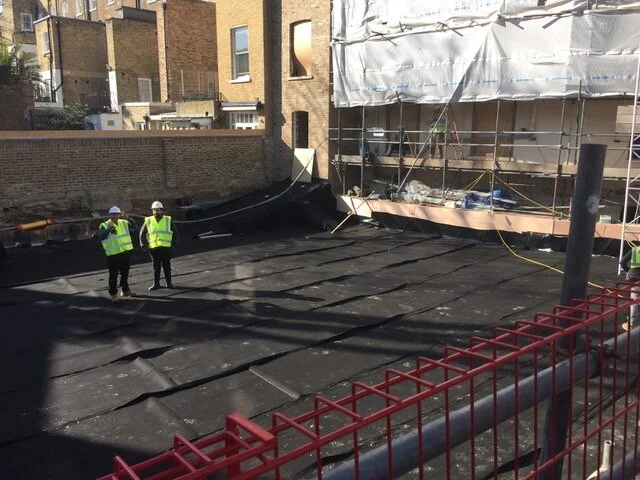Drainage - don't get bogged down
Welcome to the first in our new series of blogs addressing common site issues, we start by looking at a challenge we often come across - poor drainage.
Poor drainage can be a devastating problem in London gardens, leading to compacted, airless soil that chokes plants and destroys your garden vision.
Here are 5 common problems and the solutions Alaster Anderson has perfected to overcome them, thanks to our years of planting expertise.
1. Compaction:
The No. 1 problem we see in gardens where soil brought in during installation is trampled underfoot or driven over – so water cannot drain away, there is not enough oxygen and roots cannot grow.
How we solve it: We use mechanical means to break up the compaction, tailoring our technique to each individual site, then review.
When we inspected this garden we found a serious compaction and drainage problem. In the pit the layer of very dark, almost black, soil indicates where lack of air has made the soil anaerobic. At the bottom there is standing water. As a result, much of the woody plants have died.
2. Smearing:
When feet leave a sheen on wet soil that creates a seal so water cannot drain and air cannot penetrate the surface layer. This is a surprisingly common problem that often leads to plant failure in borders, or where careless feet have stamped down soil in planting holes while placing specimens. Taxus is particularly susceptible to waterlogged conditions.
How we solve it:
In a border, by spiking the soil with a garden fork. This is highly effective at relieving surface compaction and smearing.
Under planting, we dig down to take a soil profile and identify what is compromising the plant’s health. We can then take remedial action.
3. London Clay:
Established London gardens tend to drain quite well naturally, but clay smears and compacts very easily during redevelopment. Drainage issues arise if the clay sub-soil layer is damaged during installation and not repaired before top soil is added.
How we solve it: We manage the situation during initial installation by using gangways to keep off the soil when it is wet and only using tracked machines where there is ground protection. Surface smearing should only be broken up once soil has dried out.
4. Drainage depth:
We often come across drainage depths at 400-450mm. This is too shallow for some of the glorious specimens our clients love, such as trees with rootballs 600-800mm deep.
How we solve it: To stop the bottom of a rootball sitting in undrained soil we ideally work with landscapers to get the drainage right at the beginning. Alternatively we raise the height of the plant so that half the rootball is out of the ground, surrounding it with our unique “cookie cutters” – steel planters with no bottom. A great example of Alaster Anderson innovation!
5. Excavation works:
When basements are dug out and gardens lowered, natural existing drainage is removed.
How we solve it: When a garden is below the natural drainage level, we design a drainage system to sump and pump water from the soil. It is vital to do this before installing the garden, and it can involve significant work if not done at the outset, including digging up existing landscaping to route pipes.
For drainage problem-solving you can rely on, call us today.
You can reach us on 0207 305 7183 or email at enquire@alasteranderson.com





